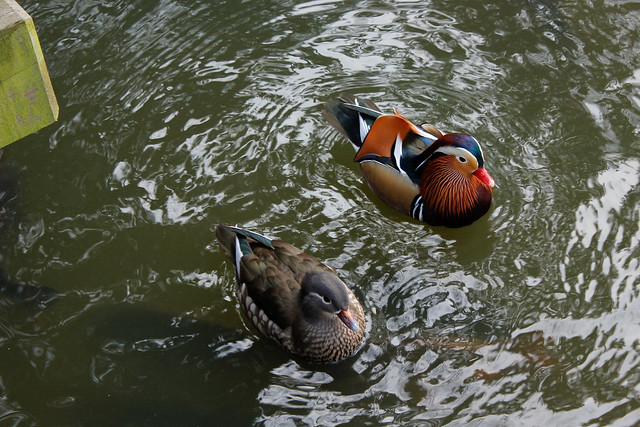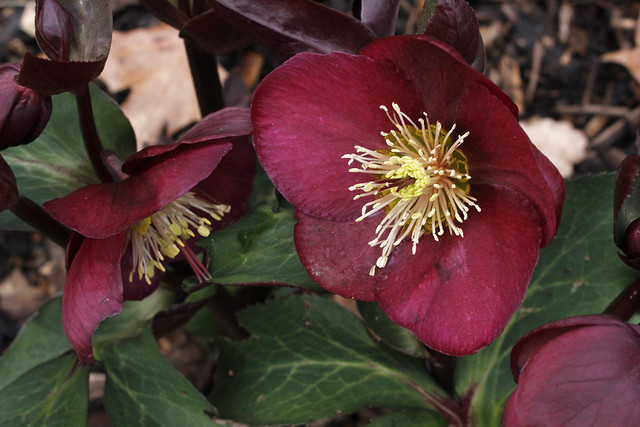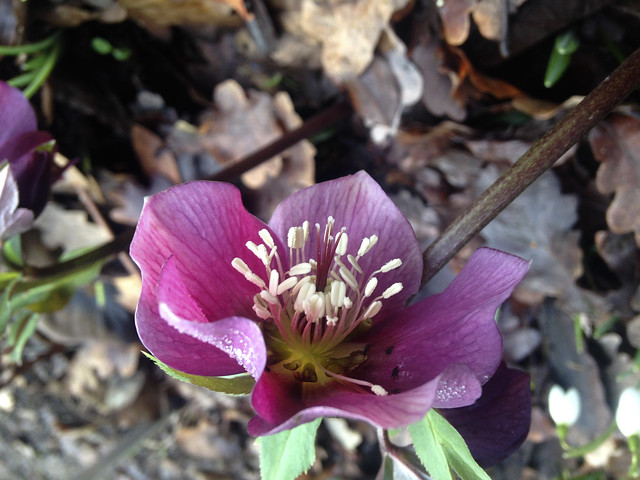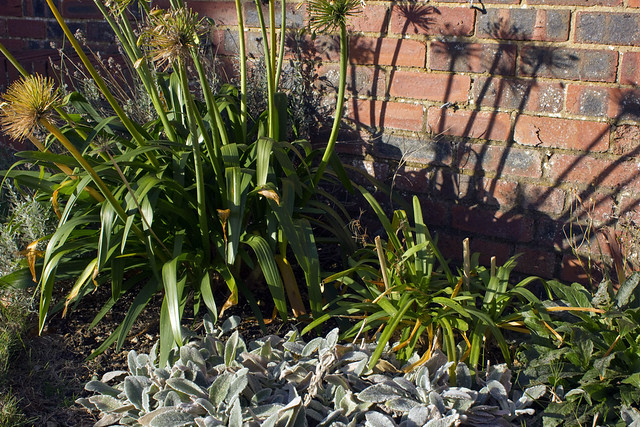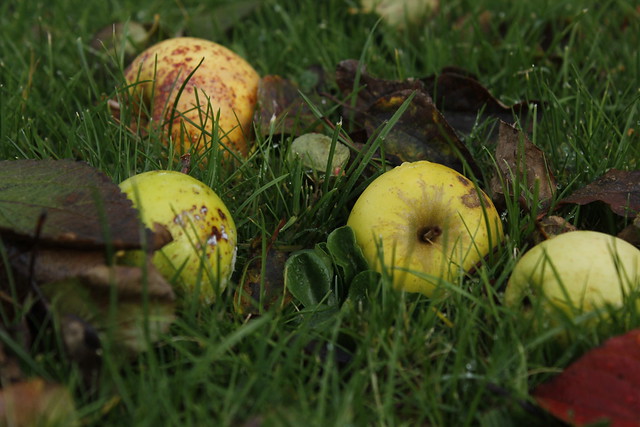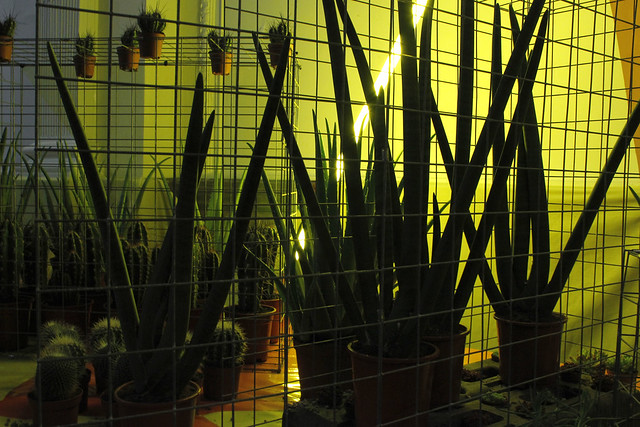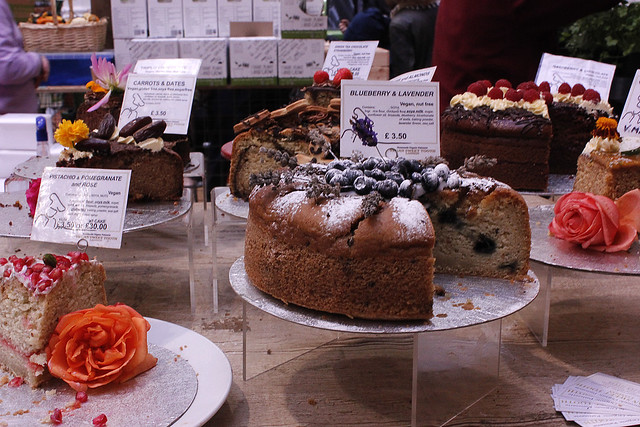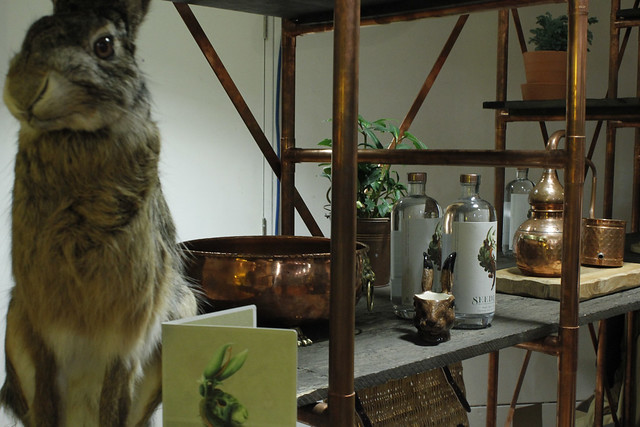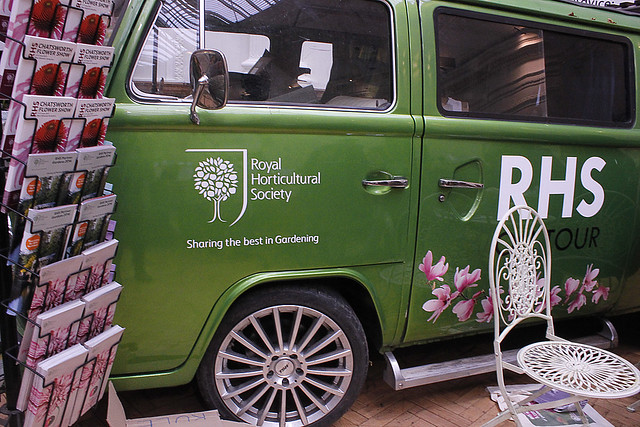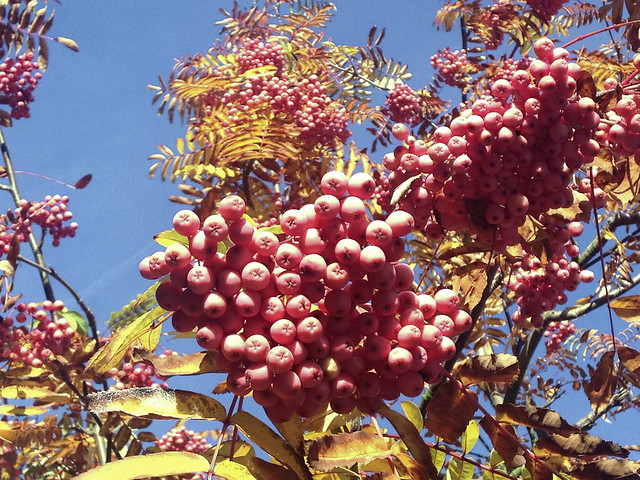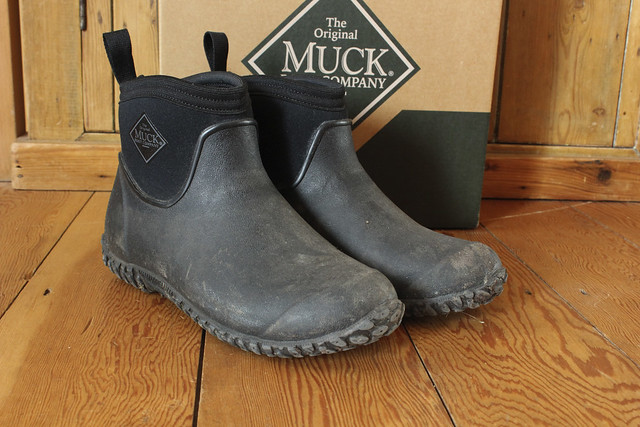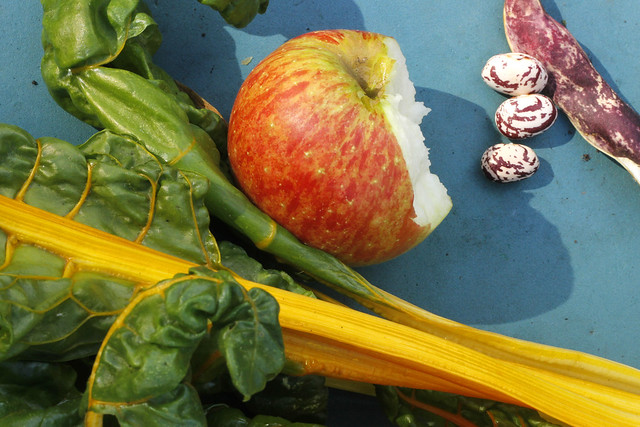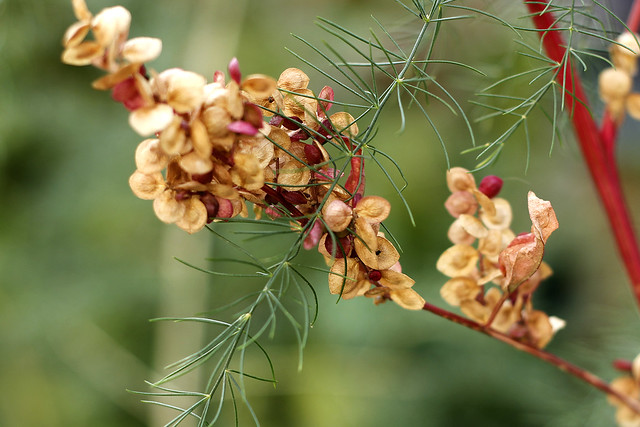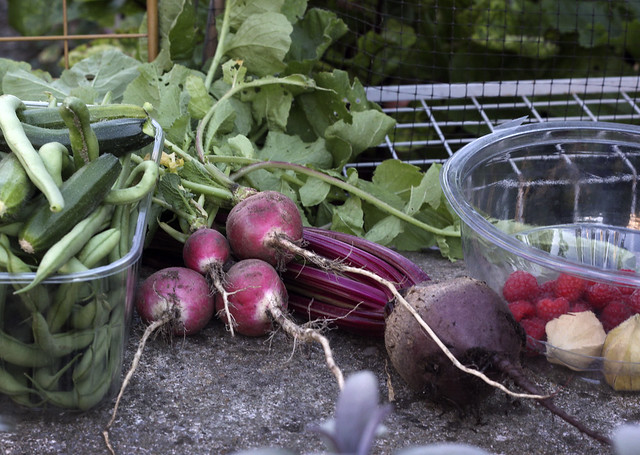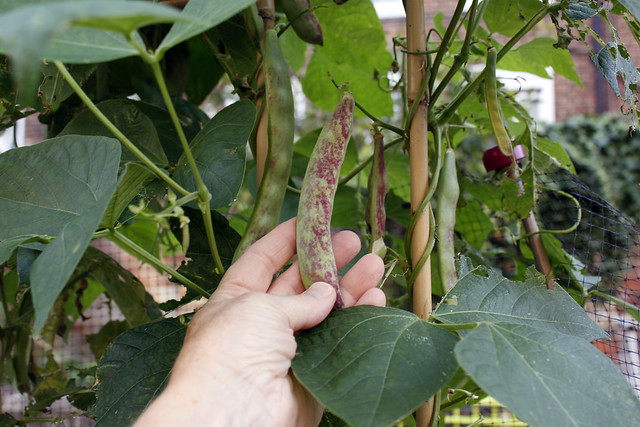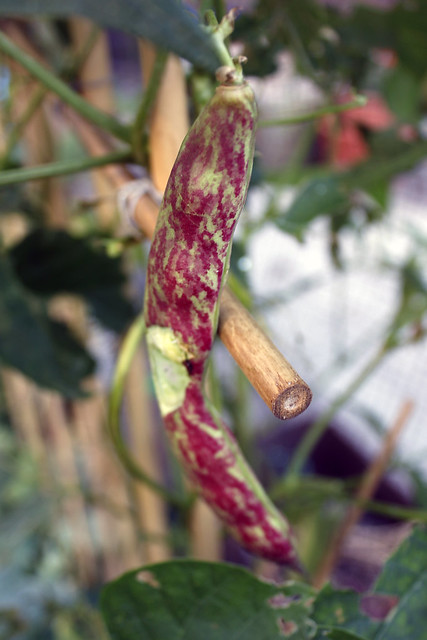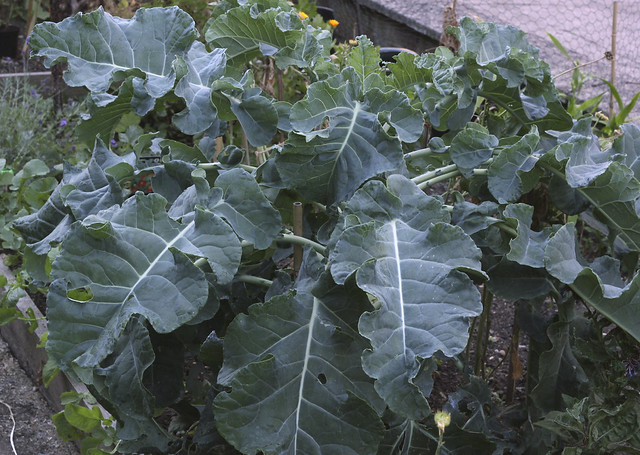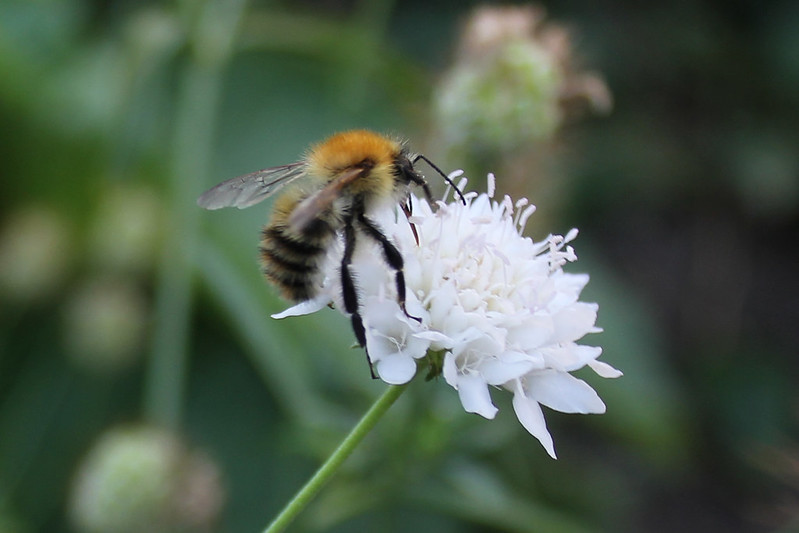Last weekend I joined in with Veg Plotting's engaging #mygardenrightnow meme with pics of me in the middle garden as that was where I'd been working but ... "What about the veg patch?", do I hear you ask? Indeed. Still loved, rarely forgotten. That space has been quietly trundling along over winter supplying me with kale, chard, beetroot, a few herbs, wild rocket and bucketloads of inspiration to be outdoors. (I haven't yet nailed the winter salad that I hope to achieve this year.)
 |
| Now depleted winter veg but, ooh look!, here comes rhubarb and psb! |
Seeing the garden spring back into life over the past few weeks has brought good cheer and a reason to walk through every day, sometimes lingering to pull a weed or two and making plans. It's not just veg that's grown here though and my favourite spot right now is the patch under the apple tree - I like to think of it as my "spring border. As soon as the fruit trees were planted, I wanted to pretty up the soil underneath so every year since I've randomly dropped in primulas, mini daffodils, violets, snowdrops and crocuses - all of which are gradually spreading out and providing much needed sustenance for early pollinators.
Last year I transplanted some of the hellebore seedlings from the middle garden and am delighted to see that they've started to flower this spring. The more the merrier!
I'd like to claim that I actually planned the planter above but the sad reality is that I ran out of time in autumn 2015 and plonked crocus bulbs in so that they weren't wasted ... and since last spring had completely forgotten they were there, proving the point that bulbs thrive on neglect. Most gardeners have their fails but, happily, I seem to have turned this one around.
Inside the veg patch, the raspberry canes have been cut down, empty beds are weed free and mulched where possible - hence the cages over the asparagus bed. Purple sprouting broccoli is finally starting to sprout to my huge relief. A couple of the plants had got so enormous that they regularly toppled over, blocking the path or crushing other plants depending which way the wind blew. These plants were 'Early summer purple' so wouldn't have sprouted until May; that was bad planning on my part as I now need the bed for other veg so, spur of the moment, I heaved them out. Yep. That was probably a really stupid decision in terms of future harvests but, lesson learned, I should have known by now to place them at the back of the bed, firm them in and tie them up. The supporting stakes were not strong enough for such big plants. And at least I can now get to the far end of the Veg Patch. Every year a learning curve.
I'm really happy with the veg patch at the moment, although there's still work to be done. I still have a little bit of hungry gap veg and, more importantly, I have space to get the ball rolling again - and, serendipitously, a bit of free time coming up to do just that.
I've read that #mygardenrightnow will be back in June, joining the Chelsea Fringe online. Look out for news about that nearer the time from Veg Plotting.










